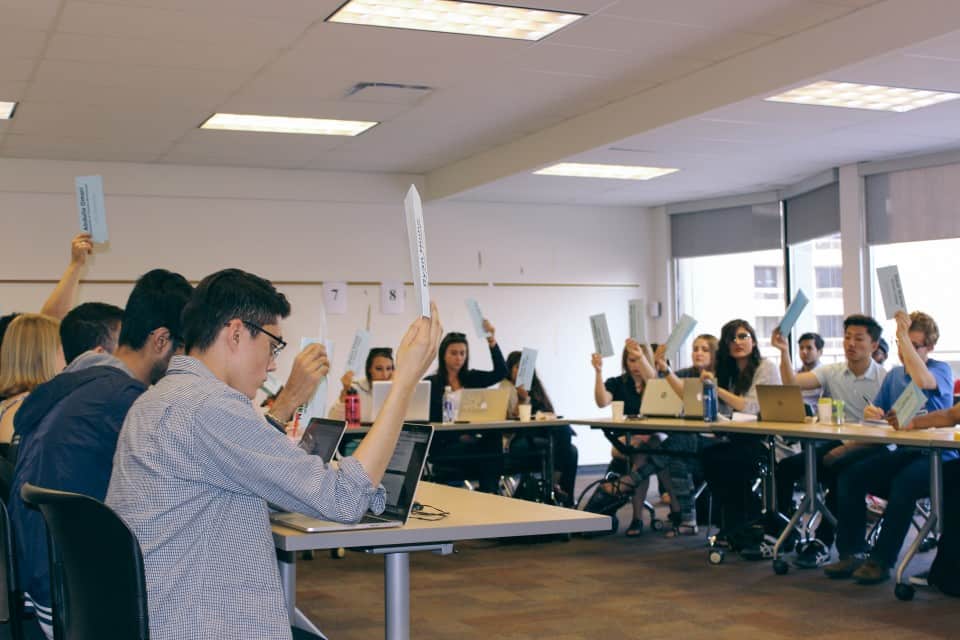The University of Toronto Students’ Union’s (UTSU) Board of Directors voted this past Sunday to endorse ‘Plan B’ for the upcoming Annual General Meeting (AGM). Plan B is one of three originally submitted board structure proposals and is moved by Arts & Science at-large director Khrystyna Zhuk and seconded by University College director Daman Singh.
In order to comply with the new rules laid out by the Canada Not-for-profit Corporations Act (CNCA), the UTSU will need a new board structure. During last year’s Annual General Meeting, the sole board proposal on the agenda was voted down. The proposal would have established 10 “constituency directors” who would have represented different marginalized groups. The proposal was controversial, as many students were opposed to the lack of direct representation of colleges and professional faculties on the board.
This year, the UTSU will vote on two proposals.
“The Zhuk/Singh proposal has a fair seat distribution, is thoroughly thought out, and has the widest support among students,” said Ben Coleman, UTSU president. “Instead of aggressively pushing one particular ideology, on their own the movers have been diligent and compromising in gaining this wide support, and I think it’s worthy of endorsement from the UTSU leadership.”
Plan B has received endorsements from other student societies as well, including the Innis College Student Society, the Victoria University Students’ Administrative Council, and St. Michael’s College Student Union.
If chosen, Zhuk’s proposal would maintain the same number of board members for each college and each faculty as the current board structure. Each student society would hold internal elections for their respective director positions. In addition, there would be six “general equity” directors that would be appointed by the board. Plan B would also make the position of vice-president campus life an elected position and require the vice-president equity to be elected as an independent.
Student Natalie Petra also moved a board proposal, but she ultimately chose to withdraw it. Instead, elements of Petra’s proposal are expected to be incorporated into Plan B during the AGM. Such components include the addition of a vice-president for professional faculties, as well as commissioners for mental wellness, international students’ rights, mature students, and first-year students.
Grayce Slobodian, former vice-president external for the UTSU and one of this year’s orientation coordinators, is also moving a board proposal. Slobodian’s proposal allocates a single director to each college and professional faculty, and raises the number of directors representing UTM from seven to eight. Much like the board proposal that was voted down at last year’s AGM, 12 “constituency directors” responsible for issues facing various marginalized groups would be elected.
Slobodian was present at the board meeting and voiced concerns about the endorsement of Plan B.
“You should let the members decide whether they want one over the other,” Slobodian said. “Endorsing one that’s put forward by most of the board isn’t necessarily appropriate.”
University College director Ryan Hume, UTM director Hashim Yussef, and Victoria College director Stephen Warner also expressed concerns regarding the concept of endorsing a particular board proposal. The board discussed issues of fairness when endorsing one motion over the other motions on the AGM’s agenda.
Coleman disagreed, and stated that UTSU had been fair to all the proposals and stressed the importance of passing a board structure at the AGM.
“By providing legal feedback to all proposals as well as choosing not to have the UTSU take a stance on proposals until this point, we’ve been able to open up participation in the process,” said Coleman. “However, this is [a] decision that affects the fundamental nature of the UTSU and needs to pass with a 2/3 majority, so it would be irresponsible for us to not build a majority consensus.”
The two proposals will be considered at the AGM on October 7 in the OISE auditorium.


